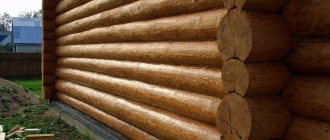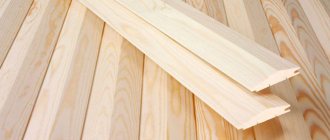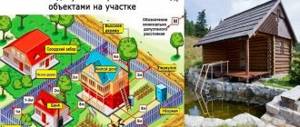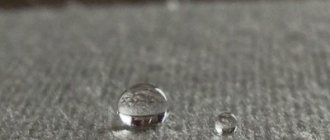Cinder blocks are one of the most popular materials for the construction of buildings of any type. A cinder block is obtained through the process of vibration pressing of a concrete mixture in special forms. Construction from cinder blocks is inexpensive and fast, and if you also start making such blocks at home, you can build any building without any significant costs. Self making cinder blocks with your own hands
involves the use of special devices and machines, which may well be homemade. Thus, standard cinder blocks have dimensions of 390x185 mm, and three identical holes must be made inside them. Such blocks have excellent heat and sound insulation, are quite strong and durable. And, most importantly, they are beneficial in all respects. So, from one bag of cement you can make 36 cinder blocks. And they do not need to be certified - according to the current Russian legislation, neither cinder blocks made by hand, nor the equipment for their production need to be checked anywhere for quality and safety. In general, it is most profitable to build a bathhouse from cinder blocks on your own site - quickly, economically and reliably.
General information
Cinder block is a material that is made by vibrocompression of concrete mortar; it has a rectangular shape with technological voids inside (up to three) of various shapes, a standardized size of 18.8x19x39 cm.
There are blocks without voids - they are called solid. They are much less common, since hollow cinder blocks are cheaper and have better thermal and sound insulation characteristics. The volume of voids does not exceed 30% of the total volume of each unit.
You can often hear that if you use the highest quality cement when making cinder blocks, then you can build a reliable foundation for a bathhouse or house from homemade blocks. But this is not true, because the foundation blocks must withstand heavy loads. Therefore, we recommend that for the construction of a bathhouse or residential building, you still purchase raw materials from a specialized construction market or replace them with foam blocks.
When making cinder blocks at home, you will need a special mold, ideally made of metal, in order to use it several cycles in a row, and a special vibrating machine. It is also best if you have a drawing of the blocks themselves, because without it you may end up with something completely different from what you originally wanted.
If you wish, you can change the parameters of the standard drawing, depending on the type of building and the goal you want to achieve.
To produce at home you will need:
- Coarse sand;
- Blast furnace slag or fine screening of crushed stone, crushed expanded clay;
- Cement grade not lower than M400;
- Vibrating table and vibrating machine;
- Mold for cinder block.
On average, one bag of cement is enough to produce 36 standard size cinder blocks.
The most important characteristic of a quality material is its geometry. They must have perfectly smooth edges, otherwise, if there are defects, irregularities, etc., it will be impossible to lay them. To achieve ideal geometry, it is necessary to pour the solution into the mold not just to the brim, but with a small “hill”, since the solution will shrink a little when vibrating.
Production room
It is clear that you will need not only a machine for the production of cinder blocks, but also a special room in which the entire process will be carried out. Its area should be 100-155 square meters. Having a smooth concrete floor is a must. In addition, the room must be equipped with a heating system, as well as a high-quality ventilation system.
To store cinder blocks, you can use any area with a flat surface. This can also be done outdoors, provided there is a roof or canopy. In the summer, cinder blocks dry in three days, but they need to be moistened with water 4.5 hours after production. This care allows the concrete to retain moisture, which gives cinder blocks the best quality characteristics.
Mixing the solution
First, you need to understand that there is no ideal recipe for mixing the solution. Every master has the power to change the ratio of the ingredients included in the composition, but if this is your first time creating cinder blocks with your own hands, then you should stick to the standard composition:
- 7 parts slag;
- 2 parts of sand or gravel fraction 0.5-1.5 cm;
- 1.5 parts of cement grade M400 or better M500;
- 2-3 parts water;
As the main filler, instead of blast furnace slag, you can use expanded clay, clay, gypsum, gravel, perlite and many other analogues. But there is one important rule - if slag is chosen as the main filler, then adding other additives is strictly not recommended.
Particular attention is paid to the amount of water in the mixture. The solution should not turn out too liquid or vice versa.
You can also add 5 grams of plasticizer per block to the mixture, which will help increase thermal performance and protect the material from moisture and low temperatures.
If you would like to get colored cinder blocks, then you can add a little chalk or crushed brick to the solution.
To check the quality, you can do a simple test: take a little solution in your hand, crumple it into a ball and throw it on a flat surface. If it crumbled due to a collision, but when compressed again it regained the shape of a circle, such a mixture can be safely used in construction.
Manufacturing of mold and vibrating machine
Before making a cinder block, you need to make two main elements - a special mold and a vibrating table. The better the shape is made, the higher quality the building material will be. Before manufacturing a special mold and a vibrating table, drawings of these devices should be prepared. The vibrating table for cinder block production is installed on a hard and level surface, which provides a high degree of stability. There should be a sufficient number of molds for the cinder block (about 10) so that the work goes quickly. It is important that they are approximately the same size.
Making a mold for a cinder block is easy. The forms are formwork into which concrete is poured. Most often molds are made from wood, although other materials are suitable. To make holes, you can use ordinary glass bottles: you will need 3 of them per block.
To make a sufficient number of cinder blocks for the construction of a bathhouse, wooden forms will be enough. For larger production, it is necessary to master the technology of manufacturing cinder block machines. To make a homemade machine, you will need the following materials and equipment:
- grinder, welder;
- motor with a power of 0.5-0.7 kW;
- iron sheet 3 mm thick;
- fittings (12 mm).
The block processing time will be up to 15 seconds. Then the vibrating platform can be removed and storage can begin. On average, using homemade cinder block machines, you can make approximately 50 blocks in 1 hour.
Return to contents
Manufacturing technology
In the case when you are not planning large-scale construction work, the construction of a multi-story building, and so on, the blocks can be created without vibration compaction.
Assembling the form
Assembling the mold is not a difficult process. The form is made of wood or metal, its dimensions must correspond to the dimensions of the future cinder blocks, on average it is 40x20x20 or 39x18.8x19 cm.
The structure consists of a bottom and side walls. The edges of the mold are made from sheets of metal 5-6 mm thick. The walls are welded together or notches are made in the transverse and longitudinal walls with a grinder, with the help of which they are attached.
If desired, and also to speed up the process, you can assemble a form with several cells 2,3,4 and even 6 or 8. To do this, it is enough to increase the length and width of all edges and install additional partitions between the cells.
To create hollow blocks, cylinders made of wood or metal, usually 2-3 pieces, are attached to the bottom using ordinary hardware (screws or nails). To save money and make your work even easier, you can use regular empty bottles instead of cylinders.
If you use wood as the walls of the mold, then they must be painted with oil paint so that the solution does not stick to the wood.
Production using a mold
Ideally, for the cinder block production process, find a secluded room with a good ventilation system, a flat floor and dry air.
Step-by-step instructions for producing blocks using a mold:
- To begin with, all prepared components must be placed in a concrete mixer, adhering to the proportions indicated above.
- When the solution is ready, fill the form with it. In order to create voids in the thickness of the blocks, bottles are placed inside the mold with the neck up, usually two or three, pre-filled with water.
- The mixture is carefully compacted so that it fills all the voids and removes air bubbles, because the more air the block contains, the less quality and reliable it is.
The solution is left for 5-6 hours, after which the bottles are removed, and the blocks themselves are left in the mold for another day. Afterwards, the blocks are taken out and stored in stacks in a dry place inaccessible to sunlight. They are dried for 28 days so that the solution completely hardens and gains its ultimate strength.
In order to prevent cracking and other deformations, the blocks should be sprayed with a small amount of water for the first few days, after which they should be wrapped in a layer of plastic film.
Production using a vibrating machine
A vibrating machine makes it possible to speed up and facilitate the process of producing cinder blocks significantly, but the price for such a unit is quite high. Therefore, for one-time use, it is better not to buy a machine or assemble it yourself, although in this case you will need certain knowledge in electrical and engineering.
The price of a machine depends on three main factors: manufacturer, power and productivity.
Here are 3 simple steps to make blocks at home using a vibrating machine:
- The mixture is mixed in the required proportions in a concrete mixer.
- The solution is filled into a mold with a small slide. After that, the vibrator is turned on for 5-10 seconds, the solution settles. The procedure is repeated until the clamp settles on the limiter.
- Then the machine is turned on again for 10-15 seconds, and the mold is removed without turning off the unit.
Within a week (5-7 days), the blocks are dried, and their complete hardening occurs no earlier than after a month.
If you have added a plasticizer to the composition, then within a few hours (7-8) after removing the blocks from the mold they can be transported and stored.
Cinder blocks are stored in pyramidal stacks of up to one hundred units in each stack.
Block forming methods
Mold for cinder blocks
How to make a cinder block with your own hands if you don’t use special equipment? For a small volume of construction (garage, bathhouse, etc.), the required number of concrete elements can be made by pouring the mixture into ordinary forms, similar to formwork for the above-ground part of the foundation. The only difference will be that the space inside must be divided into separate chambers that form the body of each concrete product.
How to make a mold for a cinder block with your own hands is shown in the figure on the left. The number of simultaneously manufactured products may vary. This depends on the availability of boards of the required length for the formwork walls. The indicated cell dimensions (20x20x40 cm) are suitable for the production of a standard block. If necessary, you can make formwork with cells of the required size (for a half-block, for example, 20x20x20 cm or others). The outer walls of the formwork are made of planed boards of the required width. They can be fastened together using sliding grooves. Make cuts on the inner sides of long boards for spacer plates. Particular attention should be paid to the fact that when assembled, the form should have perfectly right angles at the junction of the walls and partitions. The appearance of the finished product and the convenience for the builder himself when laying elements that fit well together depend on this.
The void formers in a simple wooden form can be glass bottles that need to be placed in the poured solution. In this case, a certain amount of the mixture will be displaced from the formwork, so when using this method you should not fill the cells to the top. After installing the bottles, you need to make sure that the solution in all cells is level with their edges.
When making a matrix of a more complex design (picture, right), void formers are made from wooden cones, securing them to the bottom with nails or self-tapping screws. The presence of handles on this form makes it possible to move it for installation on a vibrating table.
Before pouring the composition into molds of any design, the internal surfaces must be lubricated with used automobile oil or a similar lubricant.
This will prevent the mixture from sticking to the mold and will make it easier to remove when the blocks are ready. With this method of making cinder blocks with your own hands, you need to remove the mold no earlier than 24 hours after filling the cells. Finished products must gain strength for another 1 month before use. After this, walls of buildings, fences, etc. can be erected from cinder blocks.
Tips from the master
- Blocks made with the addition of cement are stronger and more durable. Lime blocks cope with loads a little worse.
- During drying, the blocks should not be placed close to each other. This can only be done after the solution has completely dried.
- If you replace small granules with sand, the technical characteristics of such a material will only increase.
- If you want to save money, you can combine cement and lime in a ratio of 3 to 1. This will not affect the quality in any way.
- Remember, the thicker the solution, the faster the block will dry.
- Immediately before pouring the mold, it must be cleaned and wiped. To do this, use diesel fuel, used engine oil, and so on. This manipulation will prevent the solution from sticking to the matrix.
Despite the fact that wood and brick are leaders in the construction markets, many craftsmen have learned to save money by producing inexpensive but high-quality material - cinder block. Owners of summer cottages are attracted by the simple production technology. A machine for making cinder blocks at home can be bought at any construction market. By adhering to the recipe, you can easily produce blocks of fairly decent quality in a short time.
Assembling the machine base
To make the base you will need a profile 4 mm thick. and a pipe. The profile is used to make a support frame onto which the wheels are mounted. Two vertical posts are welded to the support frame, along which the cinder block mold will move on sliders. At the top, the racks are connected to each other by a pipe, which will serve as both a handle for the operator and a support for the lifting mechanism.
The lifting mechanism is a rectangular frame made of a profile, which is attached to the transverse pipe using rotating bushings. The frame itself is connected to the form using chains from a motorcycle or moped.
An electric motor with two shafts is attached to the mold, at the ends of which an eccentric system is installed. When the electric motor is turned on, the mold will vibrate, compacting the loaded material.
The design works as follows. The form is placed on the platform and filled with the prepared solution. It is then covered with a lid and pressed down with the weight of the operator. At this moment the electric motor starts. Its operating time is determined by the weight of the operator and the consistency of the base solution. After which the form is lifted by the mechanism, and the structure is moved to a new location.
Video using the above machine for making cinder blocks
We recommend other articles on the topic
Polyurethane foam cleaner - how to wipe off hardened polyurethane foam
MDF panels for walls - variety of applications, subtleties of choice
Liquid glass, additive to concrete for waterproofing, proportions
Foam concrete blocks: characteristics, production at home
Brief description of cinder block production
Producing building materials is quite simple:
- The components (filler, water, cement) must be mixed in a concrete mixer. Here you can add plasticizers - additives that can improve water resistance, frost resistance, increase the strength of the finished material, and reduce the number of cracks.
- Transport the prepared solution and load it into a vibropress - into appropriate forms with or without partitions. This is where the main work happens: the machine processes the molds using pressure (pressure with a punch) and vibration. The process lasts about 90 seconds.
- The finished blocks are pushed out of the brick making machine. Next comes the process of hardening. With plasticizers they can be ready in 8-10 hours, without them - about 36 hours.
- The blocks are stored and undergo final drying. The products will be fully ready for sale in approximately 30 days.
What are cinder blocks: brief description, composition
Cinder block is a building stone made from various materials by vibration pressing. In fact, it is an artificial stone. The production technology was developed back in the 19th century - then the filler was slag: waste obtained from burning coal. Hence the name of the building material.
Now other materials are used as filler:
- granite screening;
- broken brick, concrete, cement;
- fine gravel, crushed stone, sand;
- sawdust.
The composition affects the characteristics of the cinder block. Sawdust makes the material more environmentally friendly; sand and crushed stone are heavier, more monolithic. The effect of each filler can be studied separately. When choosing a cinder block based on its composition, it is important to start from specific goals - decide whether you will use the blocks for the construction of residential or commercial buildings.
The filler is mixed with water and bonded with cement. The mixture is then sent to a vibrating machine for molding and compaction.











